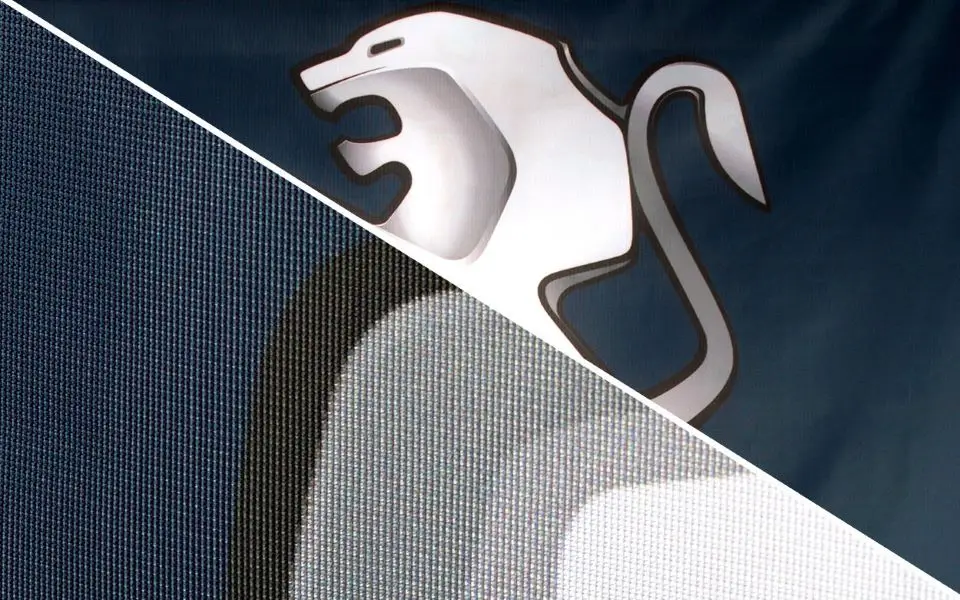
100% Polyester, 130 g/m²
Three-thread knit, 130 g/m² (optimal balance of weight and durability), self-locking weave – a globally recognized standard for flag fabrics.
National flags are the most traditional of flags. Many offices have flagpoles with national flags installed. No national holiday is complete without a row of flags on lamp posts along the main streets of cities. Both private houses and public buildings will have national flags draped over them on such a day. National flags not only appear on their own but also perfectly complement company flags on their flagpoles. They are a permanent feature of the landscape not only during national holidays.
We cannot imagine the sight of the European Parliament without a row of flagpoles. They are hoisted in front of government offices, military units, and embassies, and many companies also hoist their national flag permanently in front of their headquarters.
National flags are generally horizontal, although most of them also have a vertical version.
Order now in our online store!
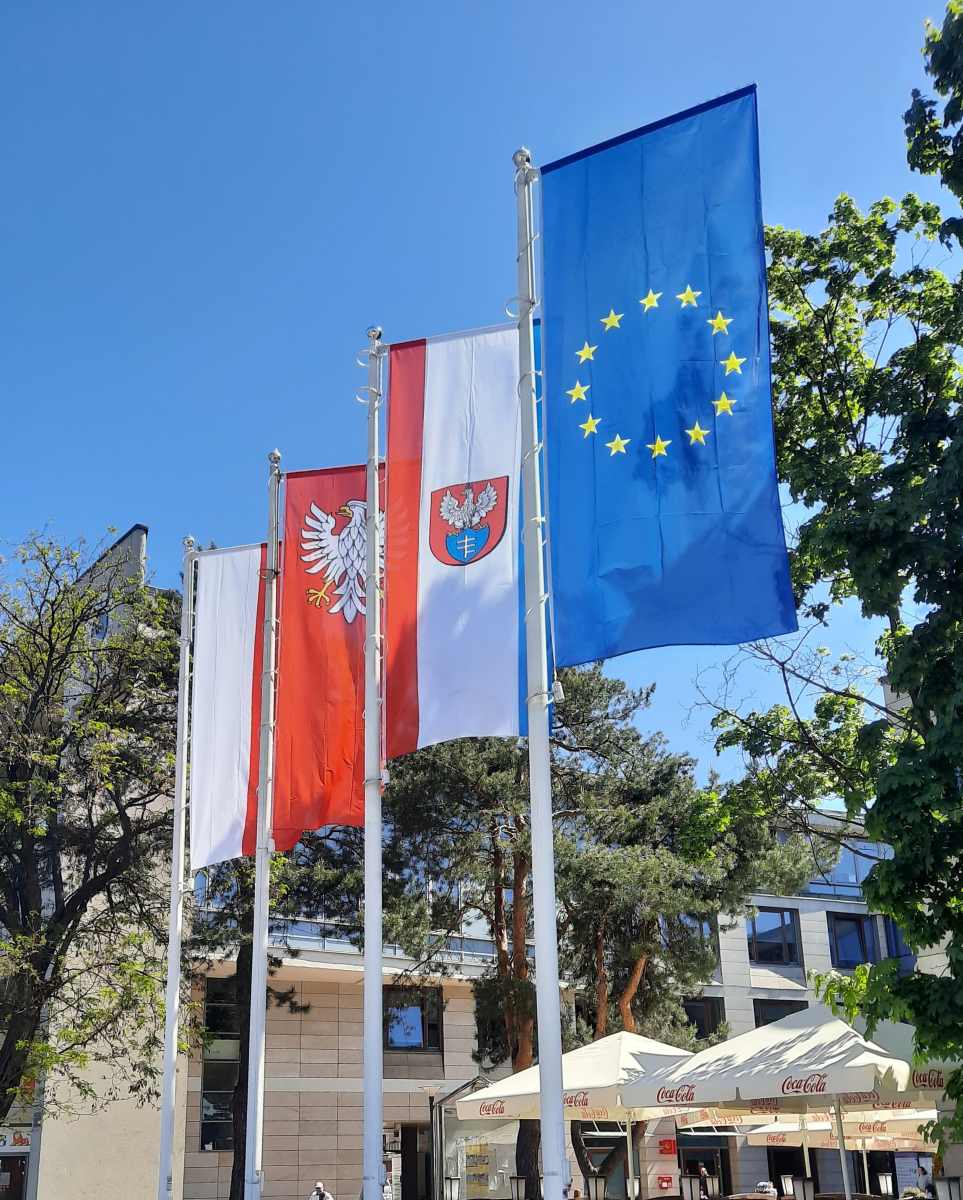

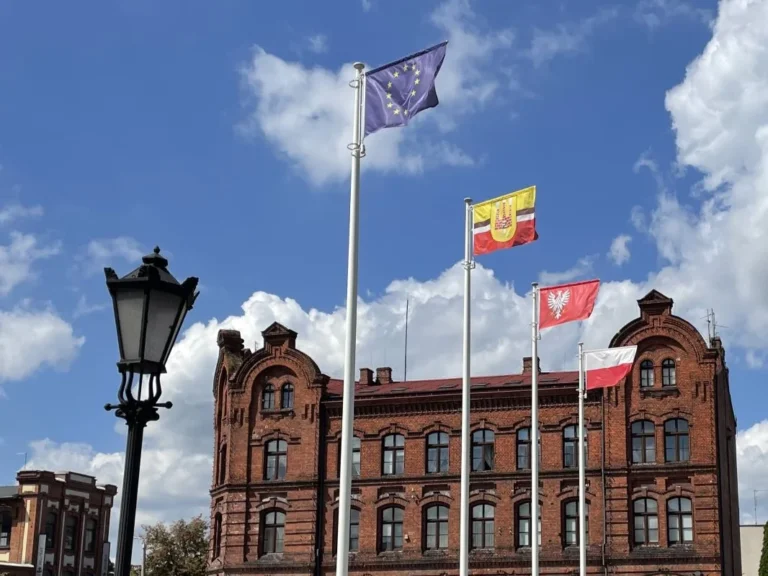
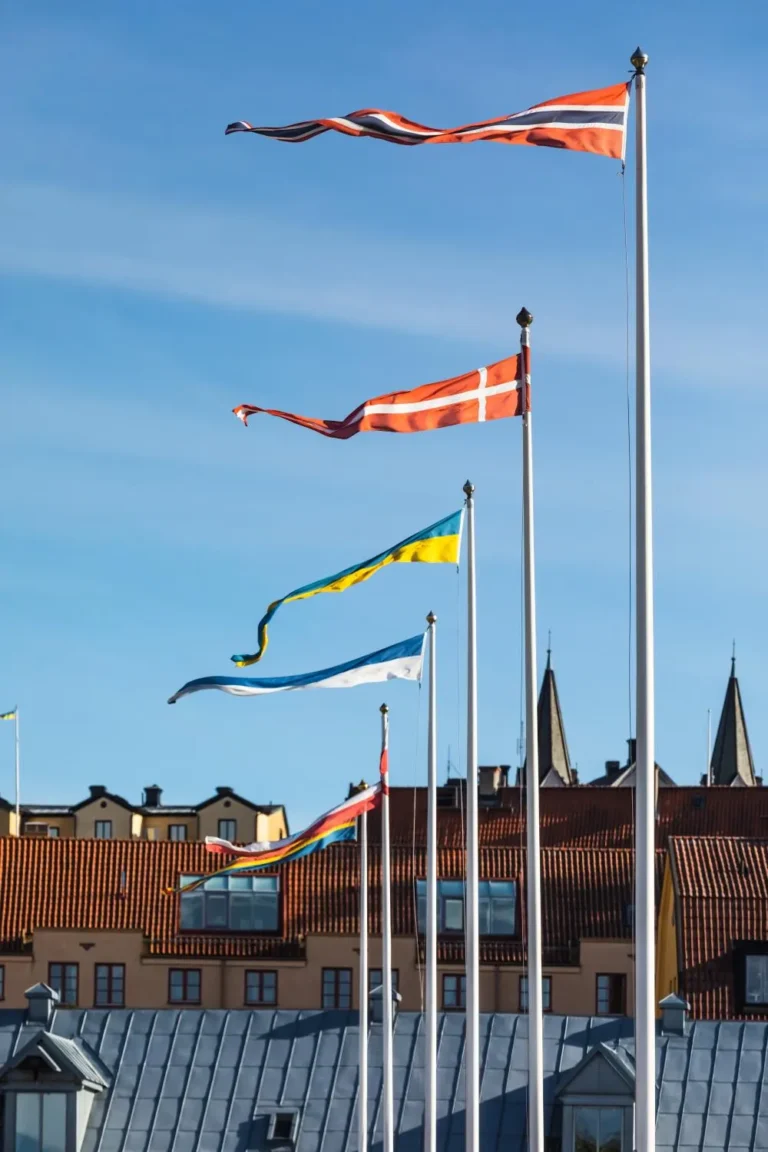
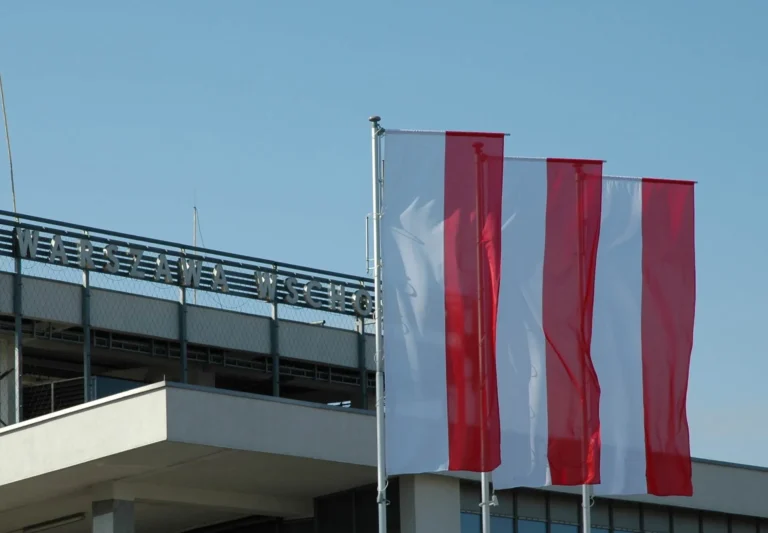

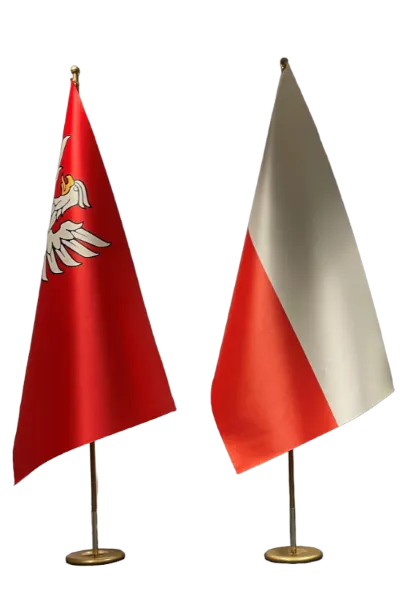
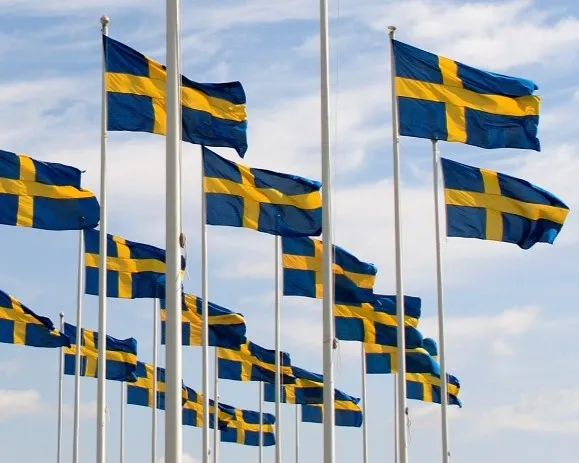
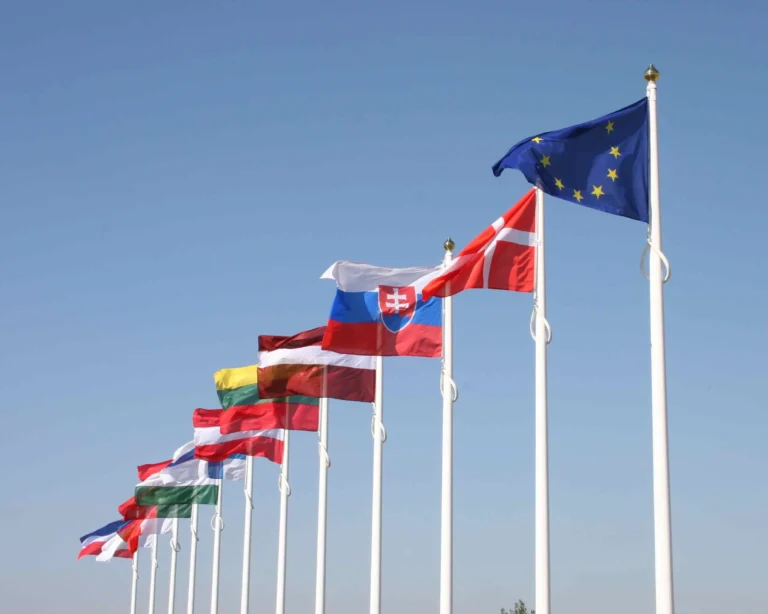
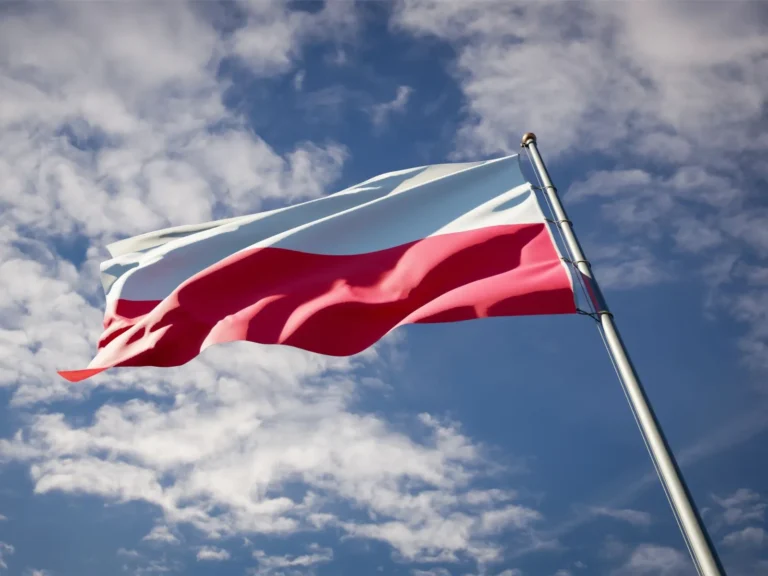
We use high-quality, durable flag fabrics tailored to the specific type of flag. Most commonly, these are polyester materials in various weaves and weights.
From classic flag fabric, to heavy-duty spun polyester for maritime and sewn flags, to shiny, premium polyester often used for official government flags — we select the right material for each application. For indoor flagpoles, we recommend a multi-layered, slightly glossy textile, which looks excellent in photographs and video recordings.
But it’s not just the fabric that matters — thread quality is equally important. We know exactly which type of thread to use to ensure your flag lasts as long as possible.

Three-thread knit, 130 g/m² (optimal balance of weight and durability), self-locking weave – a globally recognized standard for flag fabrics.
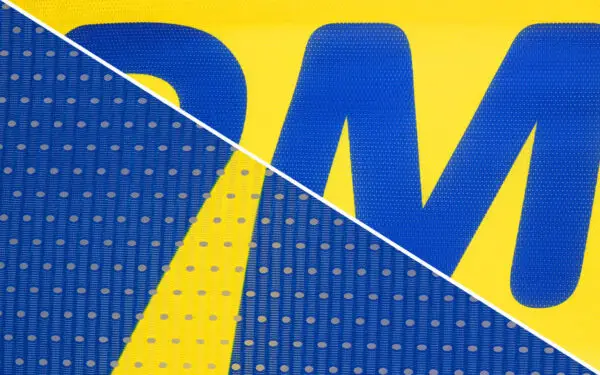
A lightweight high-tech fabric with a plain weave. Developed specifically for use on flags.
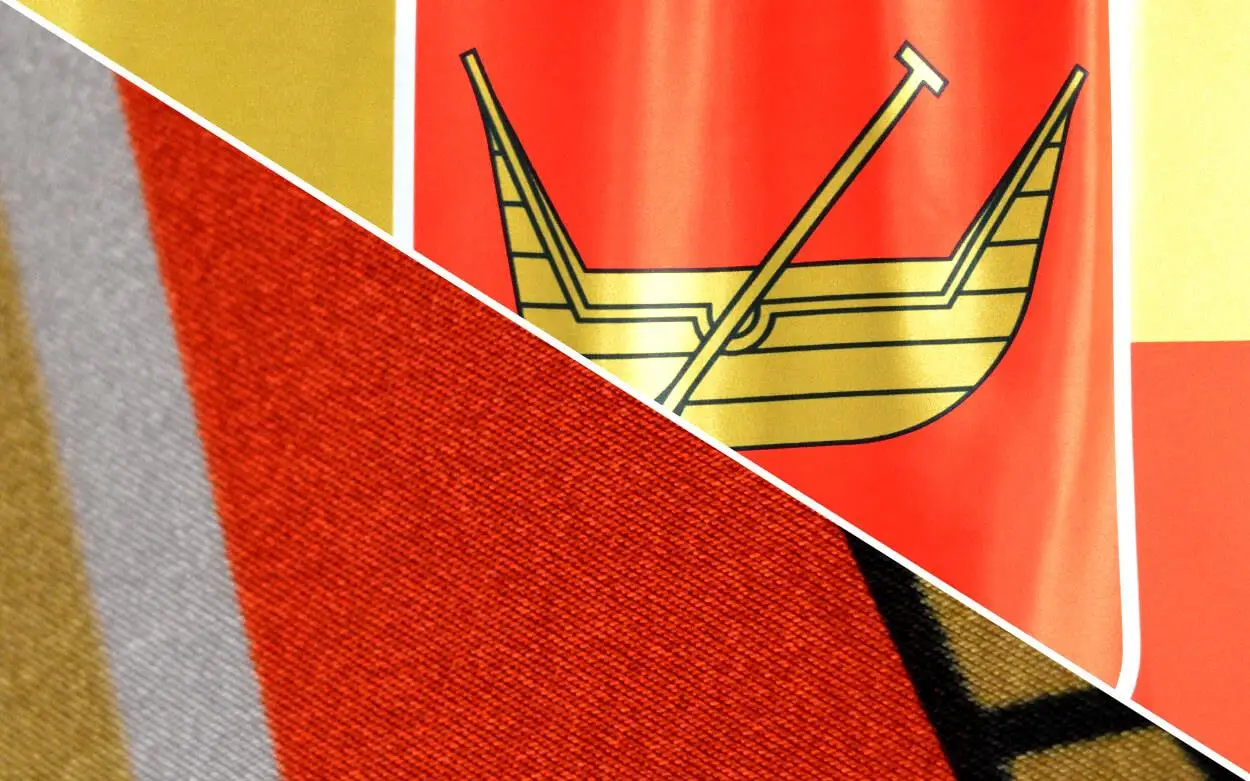
Flag fabric with an attractive, glossy appearance. Often ordered for national flags. Looks great on indoor flagpoles.
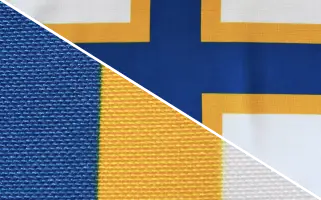
The strongest flag fabric, used for maritime flags and other demanding conditions. Suitable for both printed and sewn flags. Raw classic fabric texture for flags with character.
Printing on flags means dyeing the polyester fibers — the goal is to achieve rich, long-lasting color without closing the mesh of the fabric, preserving the flag’s breathability. This results in a more durable flag, with color fields that are gently backlit, creating a natural, radiant effect.
We most often use digital printing – it’s fast, cost-effective, and allows unlimited color combinations. For large orders with a limited number of colors, we turn to screen printing, which offers excellent color coverage and high efficiency.
For more demanding customers, we also produce sewn flags. These have a natural, handcrafted character and exceptional durability – a favorite among our Scandinavian clients.
This method is typically used for national flags, although some company flags can also be sewn, provided the logo and design allow for it to be assembled from individual fabric segments.
The fabric used for sewn flags is most often 155 g/m² spun polyester.
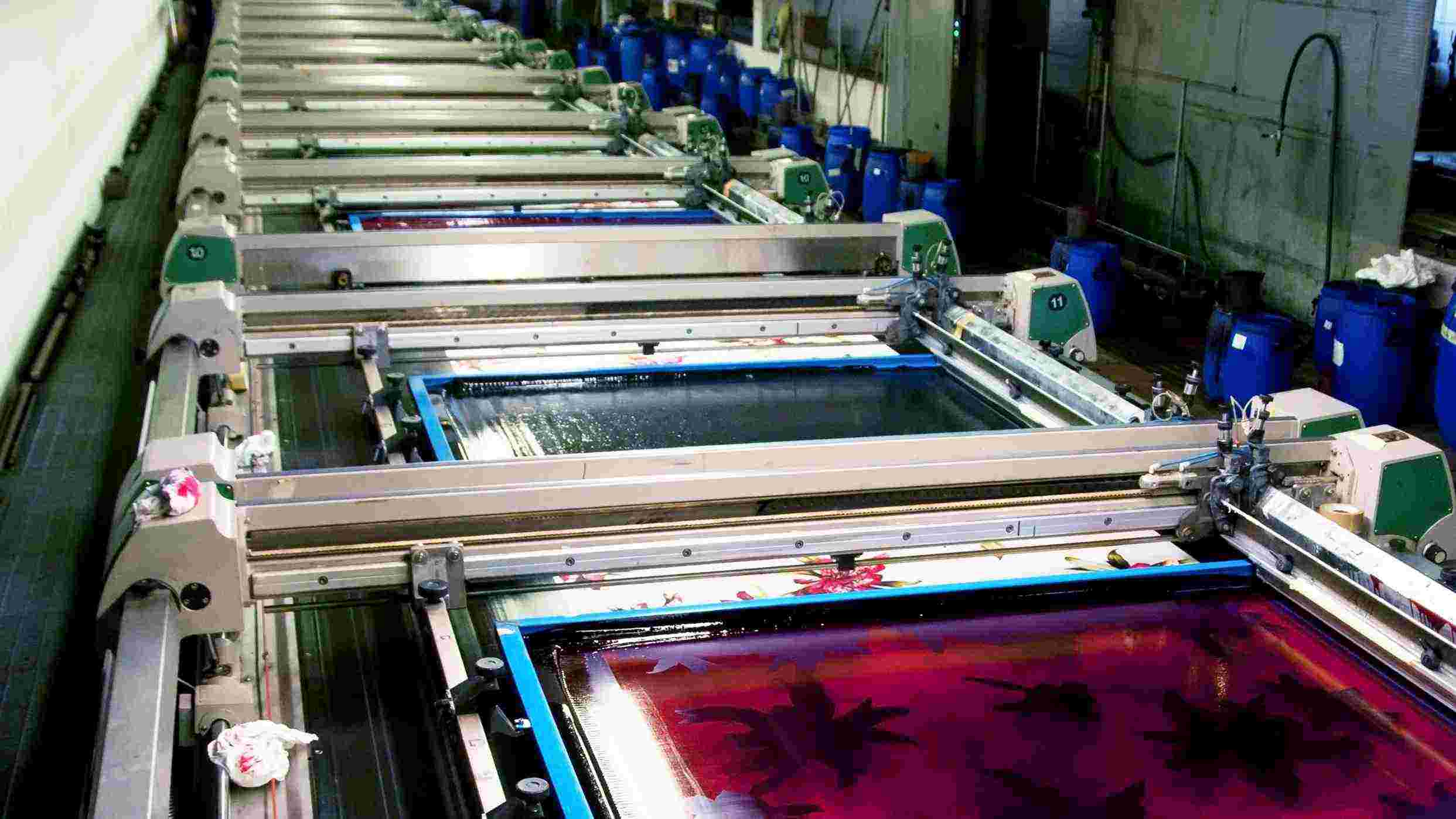
Screen printing is one of the most durable methods of applying designs to national and city flags. The process involves pressing ink through a stencil (screen), which results in deep color saturation and high resistance to fading. Flags produced with screen printing stand out with their intense hues and smooth, uniform backgrounds fully saturated with color.
This technique is ideal for producing national flags in large volumes, as it guarantees design consistency and lasting quality even with prolonged use. City flags are also often made using this method, particularly when they feature simple graphics with bold colors.
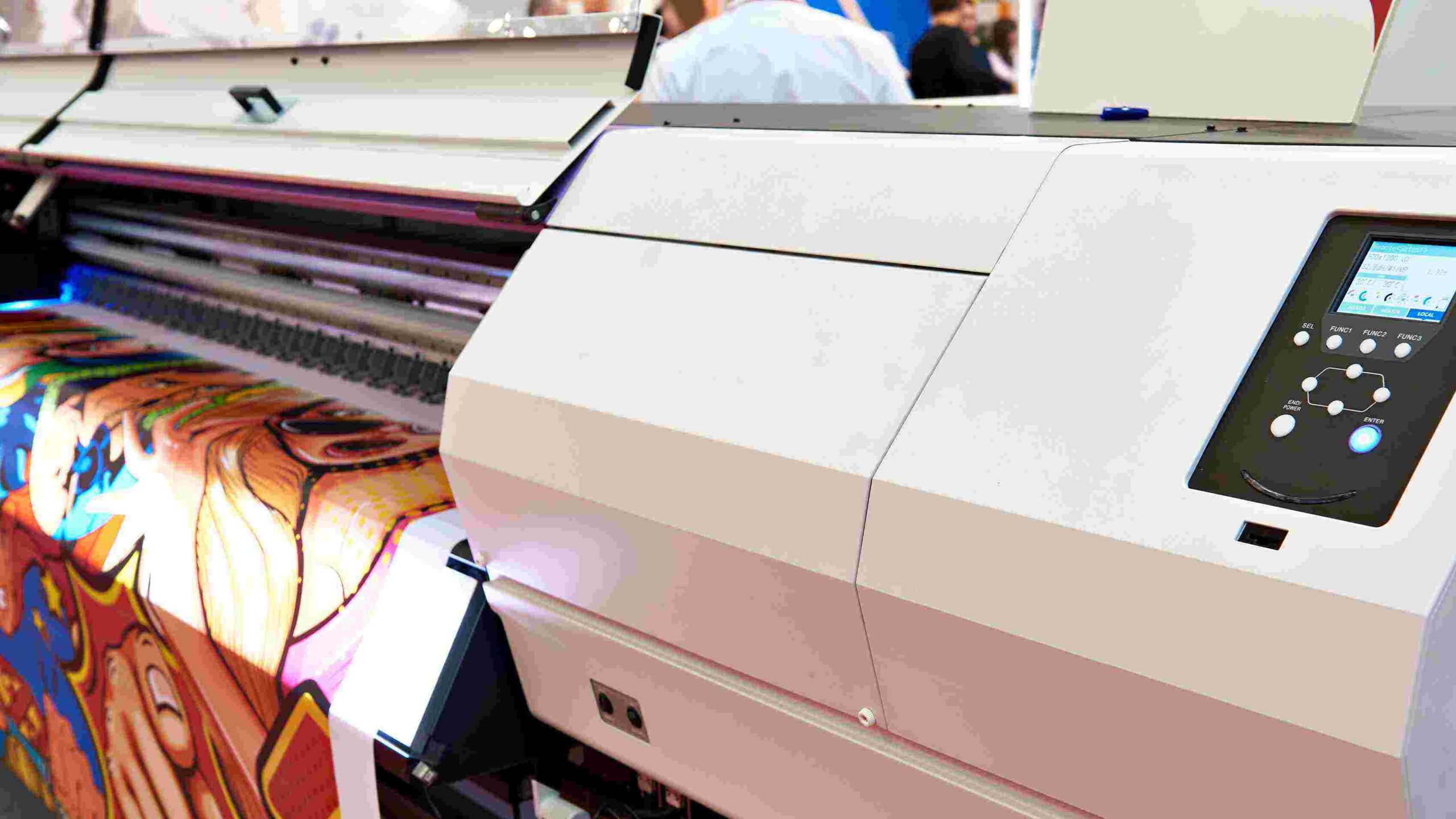
Digital printing is another popular technique for creating city and national flags. It allows for the full spectrum of colors and highly detailed reproduction. Thanks to this technology, even the most intricate city coats of arms or national symbols can be accurately rendered.
Digital printing is particularly well-suited to smaller flag orders, custom designs, or flags with a wide range of colors. It’s a fast and flexible method, enabling the production of both city and national flags on various fabric types.
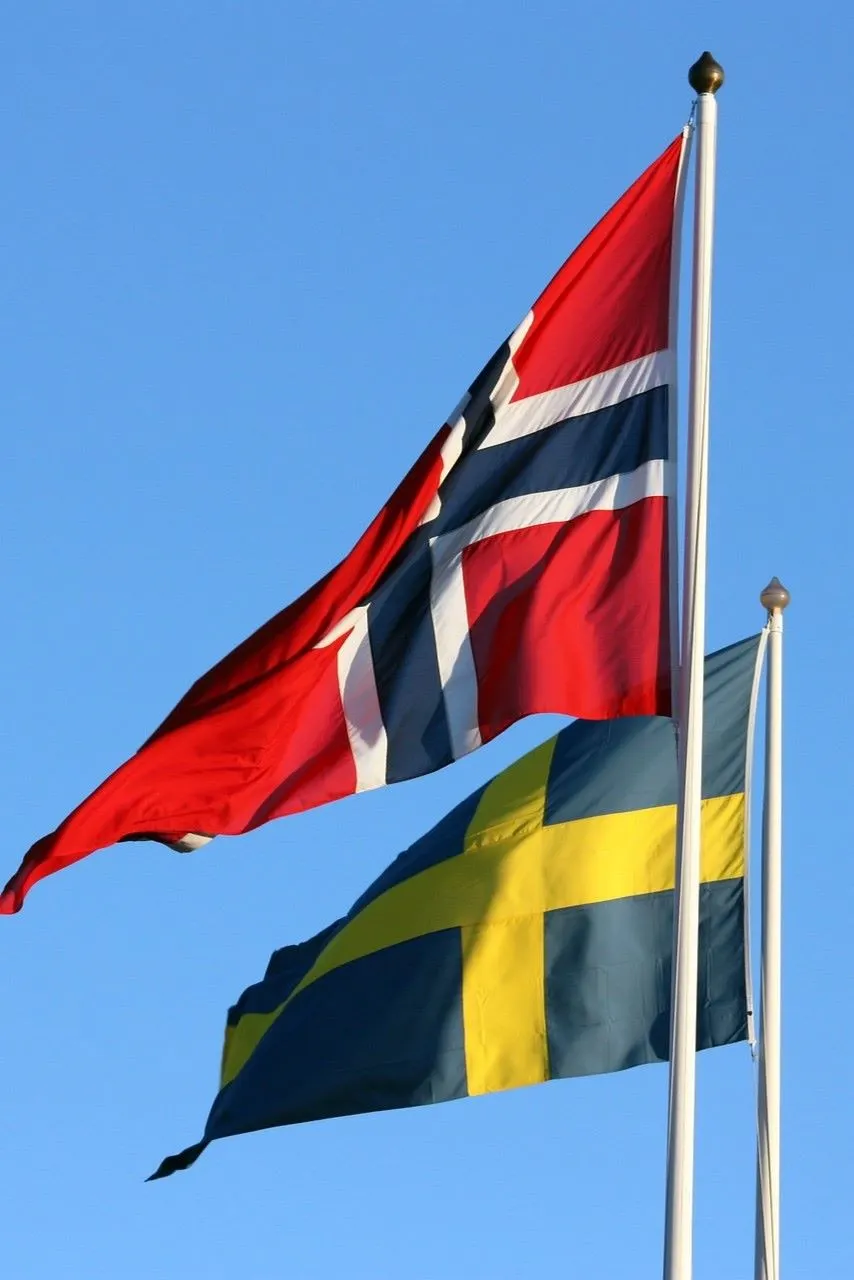
City and national flags can also be made using traditional sewing techniques – a method especially appreciated by customers looking for the highest quality and craftsmanship rooted in tradition. Each color in a sewn flag is made from a separate piece of fabric, giving the flag exceptional durability and a refined, elegant appearance.
This approach is particularly popular in Scandinavian countries, where national flags are displayed outdoors year-round, regardless of weather conditions. City flags created using this method gain a distinctive, prestigious character, making them ideal for ceremonial or representative settings.
Our national flags are produced in accordance with current standards for proportions and colors. With a solid understanding of flag protocol and general flag design principles, we can advise customers on proper flag display, including how to hang a national flag vertically. Occasionally, upon request, we produce national flags in non-standard formats—for example, placing two or more national flags on a single piece of fabric.
Flag dimensions can be customized to your needs. The only limitation is the fabric width, if the flag is to be made from a single piece. When the material is sewn together, virtually any size is possible.
Typical flag sizes include:
Horizontal flags: 70 × 110 cm, 100 × 150 cm, 125 × 200 cm, 150 × 240 cm
Vertical flags: 120 × 350 cm, 150 × 400 cm, 150 × 500 cm

We do everything we can to ensure that our flags stay in good condition on flagpoles for as long as possible. Durable stitching and the right materials give our flags an extended lifespan. We are familiar with standard finishing techniques, but also offer custom stitching options.
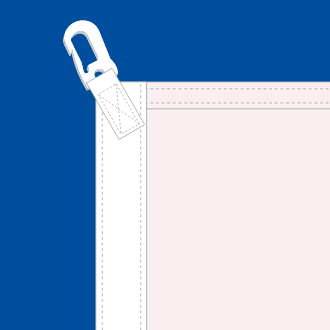
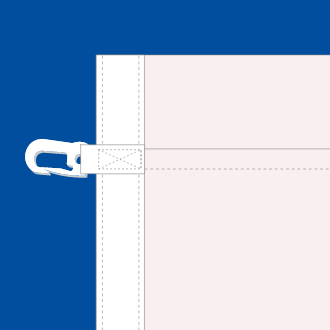
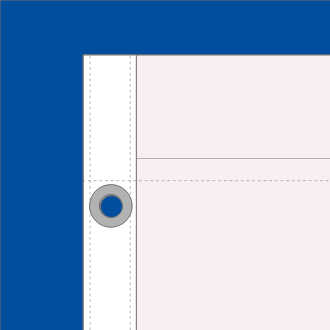
While we focus on producing long-lasting flags, proper care by the user also plays a key role in their durability:
If you’re not using the flags, take them down from the poles
In strong winds or storms, both flag and pole can be damaged – always remove flags when severe weather is expected
Don’t let flags become excessively dirty – this affects not only appearance but also longevity. Flags are machine washable
Minor damage can worsen quickly – we offer free repairs (excluding shipping costs) for washable flags, less than 6 months old, with repairable damage
Our flags are machine washable with standard detergents. The washing temperature should not exceed 60 °C. To maintain the flag’s quality, avoid allowing it to become heavily soiled.